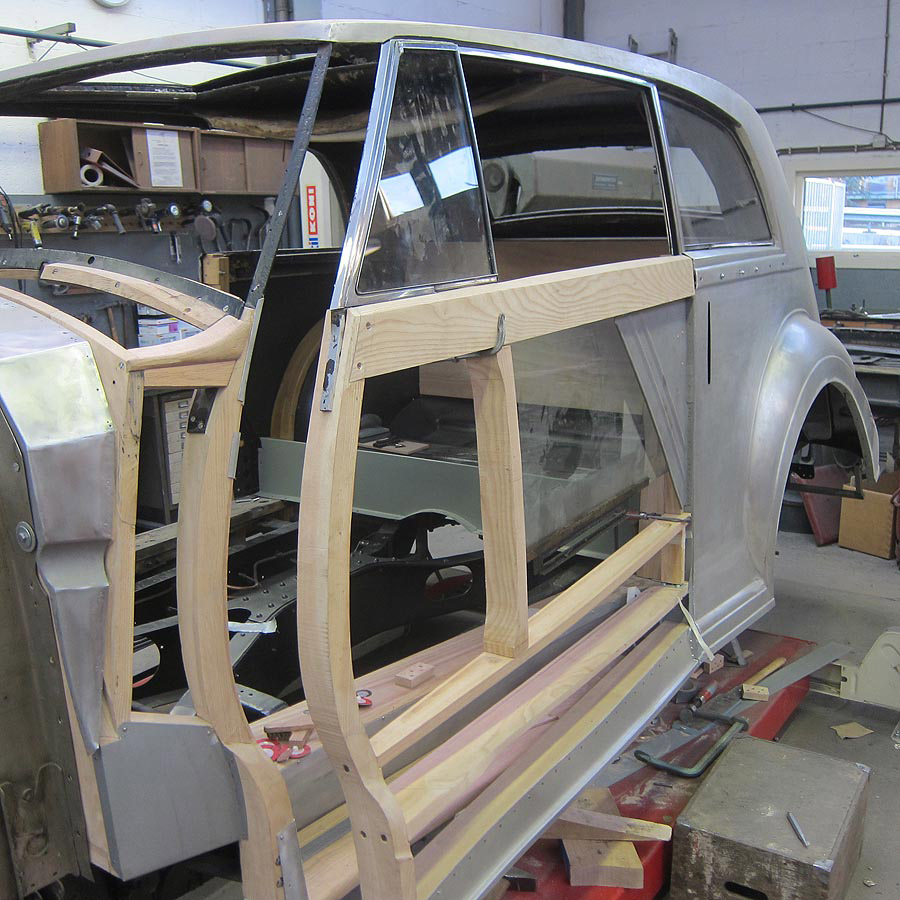Wood in the bodywork
Published on 16 October 2020
Just before the start of the real auto-mobile construction (around 1900) cars were actually horse carriages without a horse. In its place came a one-cylinder engine that was placed between the rear wheels and a chain drove the rear wheels. The building material for the car was mostly wood, one could then be forging steel but not welding. Building a car was so handicraft and it is incredible what a craftsmanship was visible.
The building material for the first motorized carriages consisted mainly of very strong oak. The seats were made of beech: easy to work with. Previously, the bars in between the horses were made of ash. This was done because oak would shatter in a collision and seriously injured the horses. Ash is not as strong as oak, but the long grain made the wood particularly flexible.
For long the automotive industry was dominated by wood. Of greater importance was the ash because of its flexibility. The wood was also known as wood “with a memory”, because of its tendency to bend back to the original shape. Moreover, natural dried ash could be bent under steam properly.
In the wood department of Bart Holland you could see wood work in construction on different vehicles. For example, the total restoration of an Opel Lutzmann from 1898 (the first Opel car for Opel in Rüsselsheim Museum).


For a Rolls-Royce 20/25 from 1928, a BMW 327 Cabriolet from 1938 and a Mercedes 220 Cabriolet from 1952 the complete wooden structures had to be made again. The ash wood beams are steamed to achieve the required shape. Later, thin layers of wood were glued together into a mould to get the right curve.





Nowadays wood in auto-mobiles are only used in very thin form: veneer.
Archive
- September 2022 (1)
- April 2022 (1)
- February 2022 (1)
- December 2021 (1)
- September 2021 (1)
- July 2021 (1)
- May 2021 (1)
- March 2021 (1)
- January 2021 (1)
- December 2020 (1)
- October 2020 (1)
- September 2020 (1)
- July 2020 (1)
- June 2020 (1)
- May 2020 (1)
- March 2020 (1)
- February 2020 (1)




